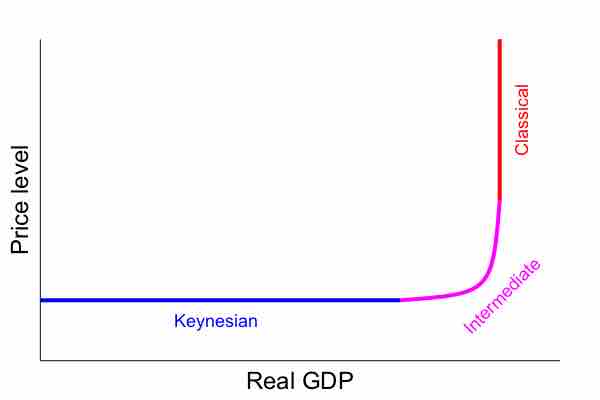Aggregate Supply
In economics, aggregate supply is defined as the total supply of goods and services that firms in a national economy are willing to sell at a given price level.
Long-run in Economics
The long-run is the conceptual time period in which there are no fixed factors of production; all factors can be changed. In the long-run, firms change supply levels in response to expected economic profits or losses.
Long-run Aggregate Supply Curve
In the long-run, only capital, labor, and technology affect the aggregate supply curve because at this point everything in the economy is assumed to be used optimally. The long-run aggregate supply curve is static because it shifts the slowest of the three ranges of the aggregate supply curve. The long-run aggregate supply curve is perfectly vertical, which reflects economists' belief that the changes in aggregate demand only cause a temporary change in an economy's total output . In the long-run, there is exactly one quantity that will be supplied.

Aggregate Supply
This graph shows the aggregate supply curve. In the long-run the aggregate supply curve is perfectly vertical, reflecting economists' belief that changes in aggregate demand only cause a temporary change in an economy's total output.
The long-run aggregate supply curve can be shifted, when the factors of production change in quantity. For example, if there is an increase in the number of available workers or labor hours in the long run, the aggregate supply curve will shift outward (it is assumed the labor market is always in equilibrium and everyone in the workforce is employed). Similarly, changes in technology can shift the curve by changing the potential output from the same amount of inputs in the long-term.
For the short-run aggregate supply, the quantity supplied increases as the price rises. The AS curve is drawn given some nominal variable, such as the nominal wage rate. In the short run, the nominal wage rate is taken as fixed. Therefore, rising P implies higher profits that justify expansion of output. However, in the long run, the nominal wage rate varies with economic conditions (high unemployment leads to falling nominal wages -- and vice-versa).
The equation used to calculate the long-run aggregate supply is: Y = Y*. In the equation, Y is the level of economic production and Y* is the natural level of production.